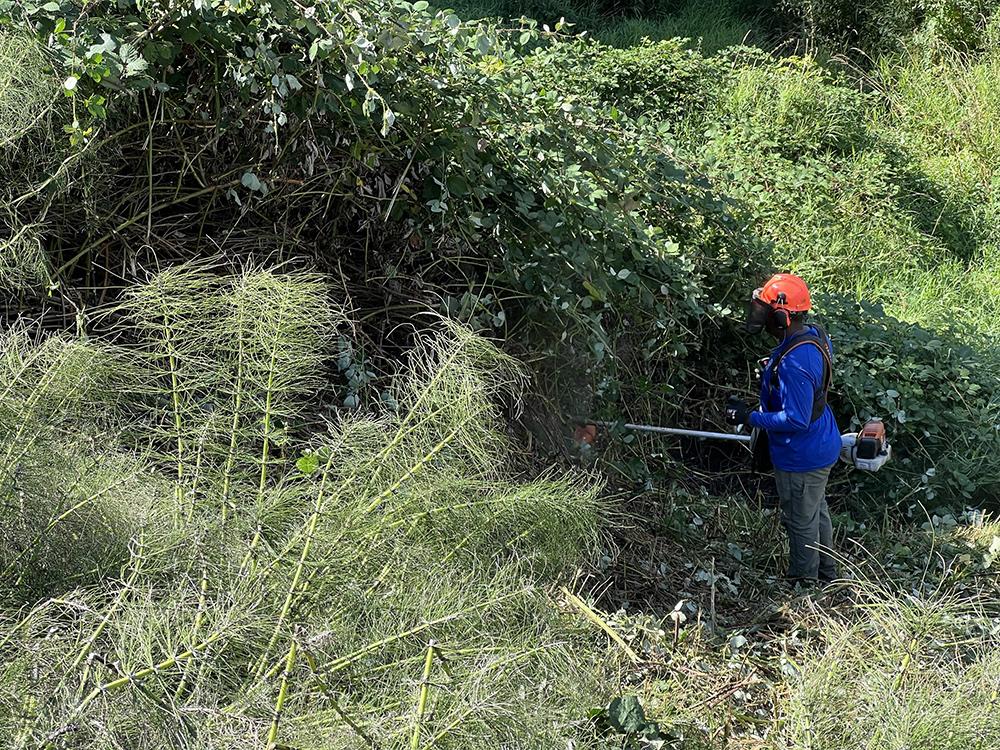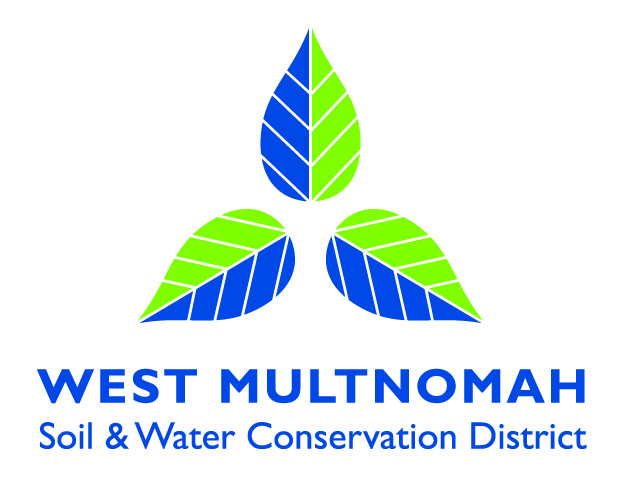Crabapple Creek is an important tributary of the Multnomah Channel, a section of water connected to the Willamette and Columbia rivers. It flows down from the Tualatin Mountains (often called Portland’s West Hills), through the family-owned Wildwood Golf Course, and delivers clean, cool water to the lower floodplain habitats along Multnomah Channel. These floodplain habitats support native fish, amphibian, and other wildlife species. Protecting and improving water quality in Crabapple Creek helps ensure salmon and steelhead will have the clean cool water they need to thrive.

In 2024, the Lower Columbia Estuary Partnership (Estuary Partnership) teamed up with West Multnomah Soil and Water Conservation District (WMSWCD) and the Wildwood Golf Course to begin the Crabapple Creek habitat restoration project.
Photo at left: Overgrown invasive Himalayan blackberry and reed canarygrass are outcompeting native plants on Crabapple Creek.
The Crabapple Creek habitat restoration project will remove overgrown invasive weeds that are taking over the riparian area along the creek and replace them with native plants. The native plants will shade the creek and maintain cool stream temperatures, improve habitat, and provide important erosion control along the creek’s steep banks. The Estuary Partnership and WMSWCD are working closely with Wildwood Golf Course to select native plants that also benefit golf course operations – demonstrating that recreation and restoration can be complementary activities. This phase of restoration will focus on roughly one acre of land at the confluence of Crabapple and Patterson creeks.

Photo above: Crew member from Ash Creek Forest Management removing overgrown invasive Himalayan blackberry along Crabapple Creek.
Photo below: A portion of the project area, recently cleared of non-native weeds and re-seeded.

When the native plants are established, they will provide erosion control for the golf course, reduce sediment runoff, improve water quality in Crabapple Creek, and provide habitat for fish and wildlife, including the region’s famous northern red-legged frogs, an Oregon State-listed sensitive species.
Project Timeline
| Timing | Activity |
| Summer-Fall 2024 | Remove invasive plants along 600 feet at the confluence of Crabapple and Patterson creeks |
| Spring-Summer 2025 | Continue to remove invasive plants prior to native plant installation |
| Winter 2025-2026 | Plant approximately 2,000 native plants that complement the golf course’s activities along Crabapple and Patterson creeks |
| 2026-2028 | Steward the newly installed native plants to ensure the success of the Crabapple Creek habitat restoration project. |
For more information about this project, contact Jenny Dezso, Estuary Partnership Principal Restoration Ecologist, or West Multnomah Soil and Water Conservation District.
-
Reach
F
-
Start Year
2024
-
Total Acres
1
-
Type
Habitat


